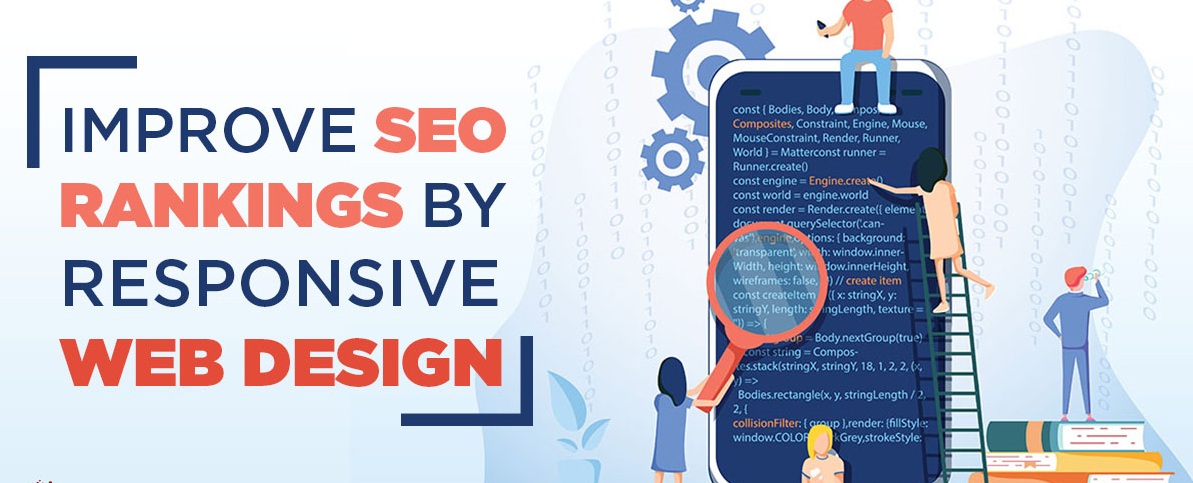Staying relevant especially on search engines like Google is a major challenge for businesses today. Businesses need to invest in a Search engine optimization strategy as well as a web-based marketing strategy to rank on the search engine result page. An SEO friendly website is designed in a way that the search engine crawlers can read and analyze the content on each web page and index them in their database. Once all your webpages are indexed, users will be able to access your web pages that have valuable content and can solve their queries effectively.
Here are the top 8 web designing practices to make your website SEO friendly:

1. Create a Blog: By including a blog on your website you not only educate your potential customers about your products and services, but you also get to add fresh content regularly. Blogs allow users to interact with the brand by leaving their comments and remarks and sharing the blog posts on social media. Blogging is great for all industries be it a local restaurant, an educational institute, or an auto parts store as it helps them rank on the search engine result page. To get an SEO advantage you need to make sure you blog weekly or even regularly as search engines tend to boost up fresh content. As a web designer, you can explain to your client the importance of a blog site and how it organically generates more traffic and ultimately leads to conversions. The website size increases over time with a blog backing it up and this leads to an increase in website authority.
2. Always Add Meta Descriptions: Meta descriptions are HTML elements that summarise the blog or webpage content for the users and search engines. It is the snippet of text that appears on the search engine result page under the headline of the blog or web page. Most of the time search engines pull these snippers automatically from the main content body, however, these descriptions are not always ideal for SEO. The purpose of the meta description is to inform users about what information they will get once they click on your website. Good meta descriptions are up to 275 characters long, contain the main keywords, convey relevance, appeal to the users’ emotions, and improve the website’s click-through rates.
Also read:- write for us technology
3. Avoid repetitive Content: The relevance of your website depends highly on the uniqueness of your content. Your content must be unique from any other website on the internet as well as from any other webpage on your own website. In other words, the content on each and every page of your website must be different, or else it leads to the issue of duplicate content. If you publish duplicate content on your website, there is a risk of getting ignored by search engines as algorithms usually look for unique content that differentiates your website from others. Make sure your page titles, meta descriptions, URL, and heading do not simply repeat content from the main body of the web page. Always check your content for plagiarism before you publish it.
4. Improve Navigation: Navigation is crucial for user experience and thus, it needs to be simple. Design your website in a way that the users find what they are looking for easily. Avoid using flash for designing your navigation as it is not website crawler friendly. If you want to add complex effects to your navigation it is better to go with CSS as it is more search engine friendly. Simple navigation will lower bounce rates, reduce website abandonment and improve your SERP rankings significantly. Logically designed website navigation will make users revisit your website, improving your rankings furthermore.
Also read:- Technology write for us
5. Work on Formatting: Proper formatting of your website content makes it easier for crawlers and users to consume it and stay for longer on your website. The Amin objective of formatting should be to make your content as readable and easy-to-understand as possible. Use a comfortable font size and typography, make sure colors and bold fonts are used strategically to highlight important information, break your content into short and digestible paragraphs, make use of white space and add lists to present key pointers effectively. Applying, structured grids, drop-down menus, progressive layouts, and rollover elements will make your content interactive and organized.
Also read:- write for us tech
6. Responsive Design: Think about the needs of mobile users when your design your website and how you can get users to convert from mobile devices. An SEO optimized website understands the importance of mobile layouts. Smartphones or mobile devices are more accessible to internet users today, in comparison to desktop. Therefore, search engines like Google favor websites that are optimized and responsive to all kinds of devices. Mobile-responsive websites typically load quickly, leading to a more positive user experience and, also an expected ranking increase.
7. Image Optimisation: Add images to every web page as it may help you get traffic from google images or image-based search engines. Use IPEG images for larger pictures as the images will appear clearer while the image size remains small. Make sure your images are responsive and adjust to different screen sizes. Along with formatting and sizing, you need to add alt texts, titles, captions, and descriptions to your website images. Use keywords while adding these details as this will improve the relevance of your website content on the search engine’s result page.
8. Footer links on All Web Pages: The ideal way of inter-linking your webpages is to use anchor text links placed strategically within the content. These text links must be your targeted keywords for SEO as they will boost the SEO ranking of the website exponentially. Some websites utilize flash navigation or JavaScript that does not allow them to use anchor texts. In such cases, it is important to add footer links to all your web pages. Footer links are often overlooked by designers however they are important for SEO. Search engines like Google see footer links as helpful for users in terms of navigation and will crawl and index those links. Do not overdo footer links and only add important or related webpages as footer links. If you have over 70 footer links google will interpret this as a negative practice.
Following content web development, best practices, and these basic SEO principles will make your website search engine friendly.
Provided by Straight NorthAuthor bio:
Hello, I am a professional SEO Expert & Write for us Technology blog and submit a guest posts on different platforms- we provides a good opportunity for content writers to submit guest posts on our website. We frequently highlight and tend to showcase guests.




